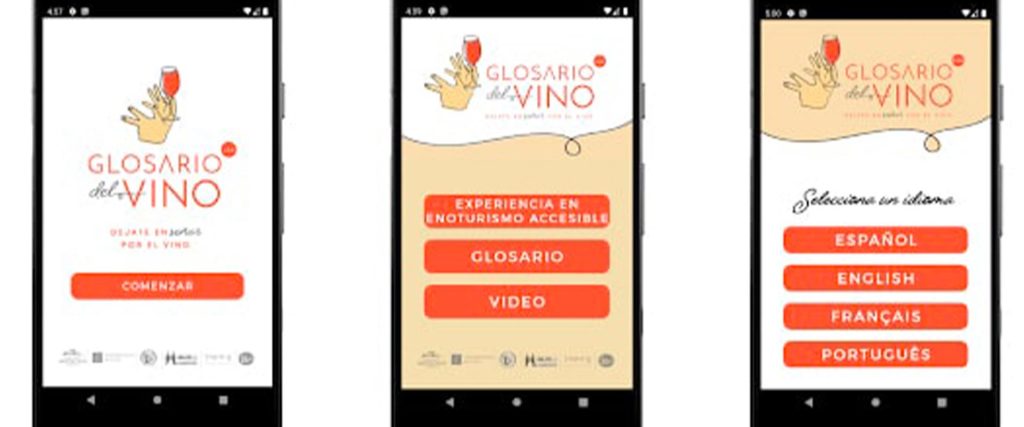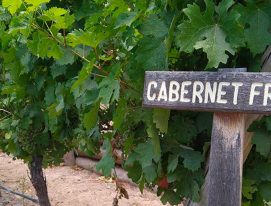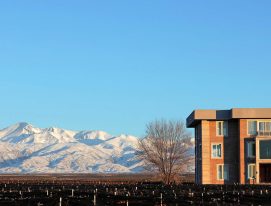Smell isn’t the same as aroma. Words have different connotations but everyone has the right to communicate, learn and grow as much as possible.
That is why an initiative has been developed in Mendoza to create the Argentine Sign Language glossary of wine related terms expressly designed – in a world first – to include the deaf and hearing impaired.

The ASL Wine Glossary
The experience was introduced to dozens of foreign visitors at the recent GWC Annual Conference, which gathered together representatives from 11 cities across four continents to an event in the Argentine province under the slogan Wines for a New World.
There, a member of the Mendoza Deaf Association, Mariana Martínez, explained that the organization worked with the Wine Institute, the Monteviejo winery, Topos: cultura accesible, and Reencarnaciones Experimentación Artística, to create the ASL Wine Glossary, a free app with 86 signs available with subtitles in Spanish, English, French and Portuguese. The initiative was awarded the prize for Best Innovative Experience.
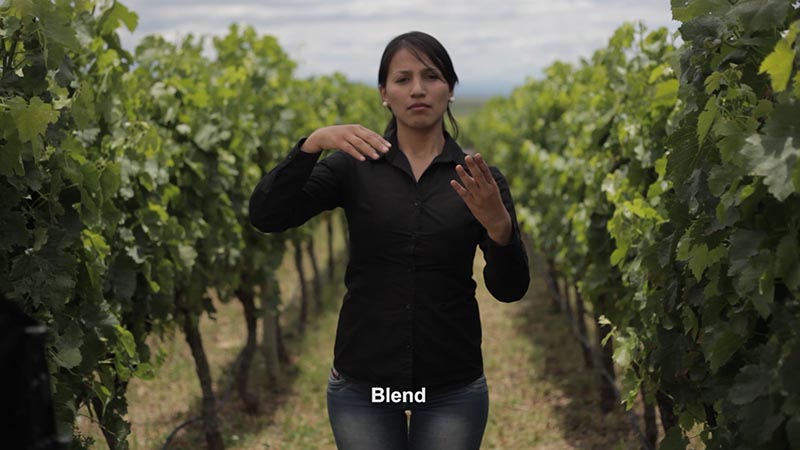
Enriching work
The ASL Wine Glossary was initially conceived at the first tasting in Argentine Sign Language held in Mendoza in 2014. This was followed by visits to wineries, oenology courses and virtual and in person tasting classes with three different levels of expertise, all of which were as inclusive as possible.
This year, activities included the addition of deaf students to the course in Accessible Oenotourism given by the Wine Institute in Mendoza. This training program used the glossary and it will be shared with the organization’s other centers.
Analía Videla, the Director of the Wine Institute, believes that “broadening the network of Accessible Tourism in Mendoza is fundamental and to do that we need trained staff in every department.”
The body has offered the specialization for over a decade. It lasts a year and is run in a hybrid format in which theory classes are virtual and tasting classes are in person.
The objective of the diploma is to provide the tools for the development of oenology tourism and share technical knowledge about Argentina’s official drink, geography and culture, and includes classes such as Tasting and Wine Service, Oenology, English, Oenotourism and Hospitality.
ASL Interpreters for the deaf and hearing impaired take part in the classes along with the professors so there are no barriers to learning. “This is an experimental period, not just for future replication in this specialty but also to share with other courses.”
“I’m very happy with the courses offered by the Wine Institute because they’re not too long, which is important because the country needs deaf guides familiar with wine culture as soon as possible,” said Mariana Martínez.
The need is two-fold: it offers new professional pathways for deaf people and is also essential for deaf tourists so they can truly enjoy the full experience.
“The work allows wineries to provide activities for deaf visitors, offering easy access to information about wine,” Martínez went on, emphasizing the mutually beneficial nature of the program.
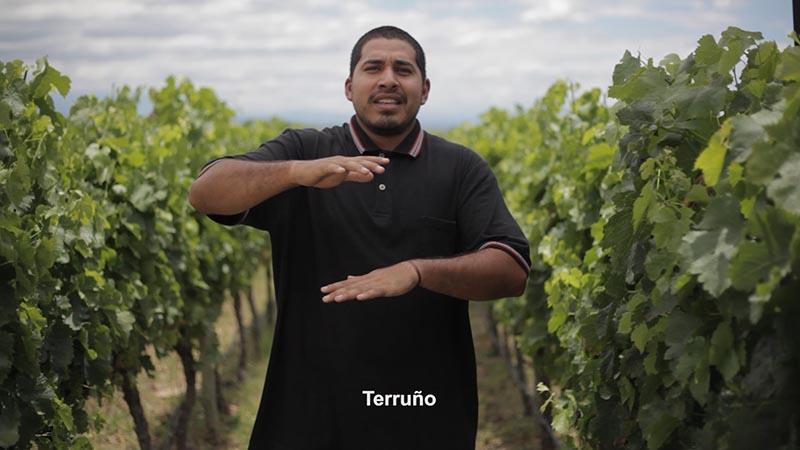
Professional inclusion
Hiring properly trained guides strikes a blow against exclusion. The leader of the deaf community was especially pleased that Bodega Monteviejo in Tunuyán (Uco Valley), had added her to its staff as a guide.
“My first time with a visitors’ group, there were 55 deaf people from Argentina, Uruguay and Chile,” she remembers.
On the stage at the Wine Capitals of the World Conference, Marcelo Pelleriti, the oenologist at Monteviejo and creator of the WineRock festival, gently patted his heart with a closed fist. “This means Malbec. And it was the first sign I made for the glossary,” he said proudly.
A team of 30 deaf students created 86 signs (from Pinot Noir, Merlot, Sauvignon Blanc, Torrontés and other varieties to words such as oenologist, blend and sommelier) to create a living tool that is in continuous expansion.
“It was a lot of work, we had to think hard and learn about the varieties and their characteristics to decide on each term,” says Martínez.
A publicity campaign has also been launched under the hashtag #dejateenSEÑArporelvino, with a channel on Youtube that screens brief videos for each expression in the ASL Wine Glossary.
The leaders of the ASL Wine Glossary are inviting more wineries to get inspired and proactively make themselves more inclusive. The ultimate goal is for this messaging to lead to genuine transformation and participation.

